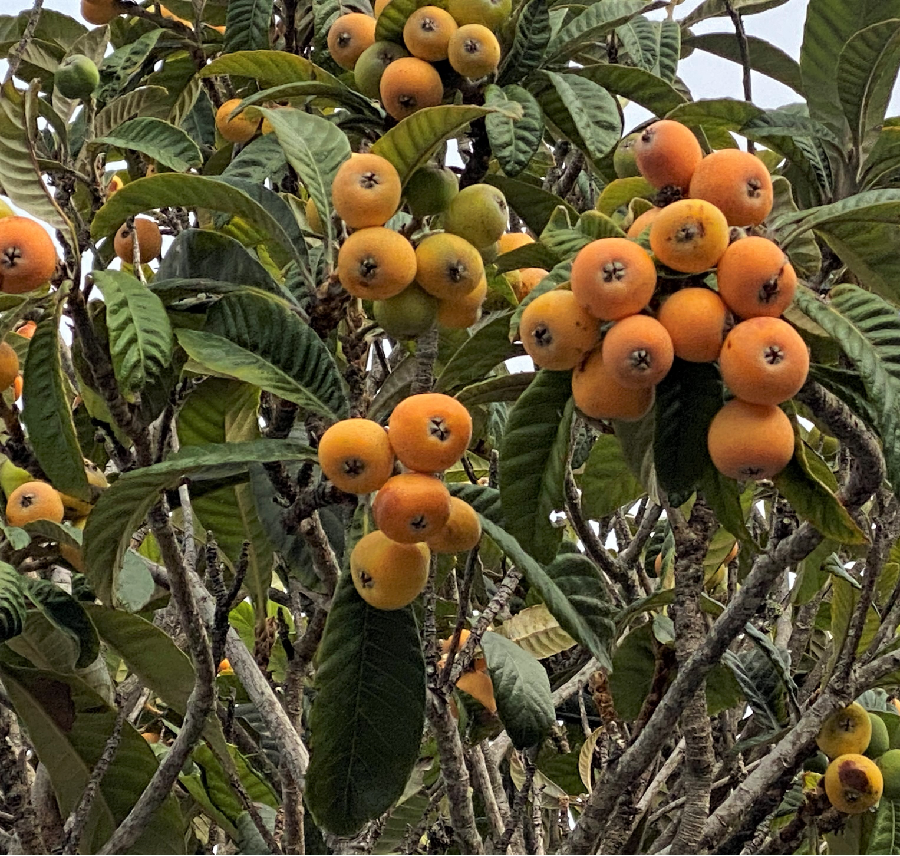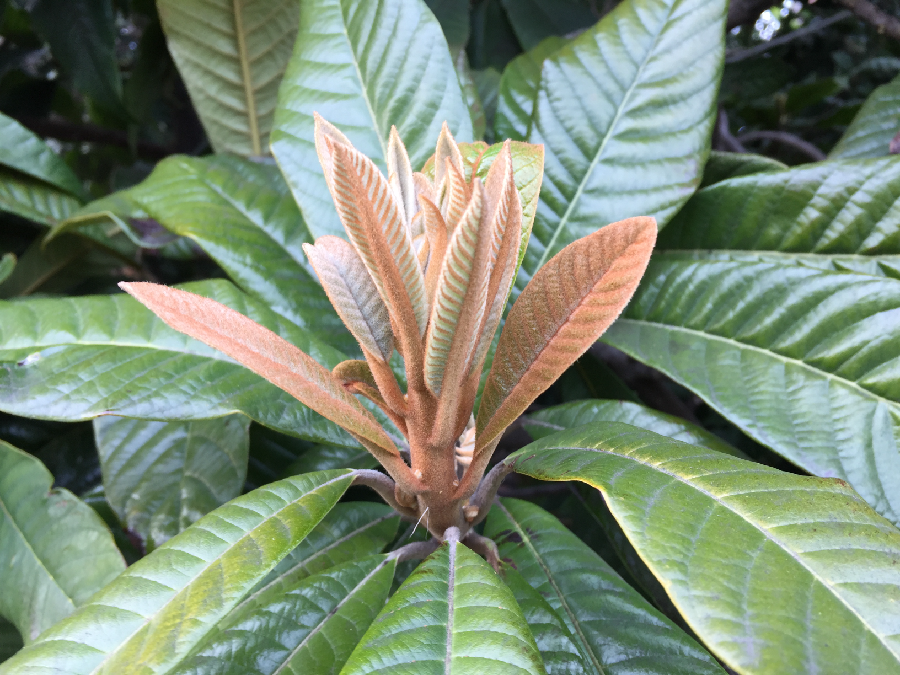Loquat: The Underrated Subtropical Superfruit with a Sweet and Tangy Twist

Ripe Loquats ready for picking - Zoya Akulova-Barlow
By Namir Damluji
(This article was originally in the. May / June 2025 issue of California Gardens)
In the world of exotic fruits, the loquat often flies under the radar, overshadowed by more popular tropical favorites like mangoes and pineapples. Yet this small, golden fruit packs a delightful combination of sweetness and tanginess, making it well worth exploring. Loquats are not only delicious but also rich in history, nutrition, and versatility. Let’s dive into the fascinating world of loquats and uncover why they deserve a spot in your fruit bowl.

New flush and emerging flowers. - Zoya Akulova-Barlow
What Are Loquats?
Loquats (*Eriobotrya japonica*) are small, oval-shaped fruits that grow on evergreen trees. They are typically about the size of a plum, with smooth or slightly fuzzy skin that ranges in color from yellow to orange when ripe. The flesh is juicy and can vary in flavor from sweet to slightly tart, depending on the variety and ripeness. Inside, you’ll find large, glossy brown seeds that are not edible but are often used in traditional medicine or for growing new trees.
Originally cultivated in China over 1,000 years ago, loquats have since spread all over the globe. They thrive in warm, subtropical climates and are often grown in home gardens for their ornamental beauty as well as their fruit.
A Nutritional Powerhouse
Loquats are more than just a tasty treat; they’re also packed with nutrients. They are an excellent source of vitamins A and C, which support immune function, skin health, and vision. The fruit also contains dietary fiber and is rich in antioxidants.
How to Enjoy Loquats
Loquats can be enjoyed in a variety of ways:
- Fresh and Raw: The common way to enjoy loquats is to eat them fresh. Simply wash the fruit, remove the seeds, and enjoy the juicy flesh. The skin is edible, though some people prefer to peel it for a smoother texture.
- In Salads: Add sliced loquats to fruit salads or green salads for a burst of sweetness and color.
- Jams and Preserves: Loquats make excellent jams, jellies, and preserves due to their natural pectin content.
- Beverages: Blend loquats into smoothies or juices for a refreshing drink. You can also use the leaves to make a soothing herbal tea.

Loquats tree can grow up to 30 feet high and 20 feet wide. - Zoya Akulova-Barlow
Growing Your Own Loquats
If you live in a warm climate, consider growing your own loquat tree. Besides enjoying their fruit, they also make attractive ornamental plants, with their large, glossy leaves and fragrant white flowers.
Loquats thrive in full sun, needing at least 6-8 hours of direct sunlight per day for optimal growth and fruit production. Loquat trees have moderate water needs and prefer well-drained soil.
Loquat trees typically bear fruit in late spring or early summer, depending on the region. Once the fruit turns a golden-yellow color and feels slightly soft to the touch, it’s ready to harvest. Be sure to pick the fruit gently to avoid bruising.
Pest and Diseases
While generally hardy, loquats can be affected by a few pests and diseases. The common pests are Fruit Flies, Aphids, and Scale Insects. The common diseases and Fire Blight and Root Rot. Fire Blight is a bacterial disease that causes wilting and blackened branches. Prune infected areas and disinfect tools between cuts. Root Rot is a disease caused by poor drainage. Avoid overwatering and plant in well-draining soil.
Pruning and Maintenance
Regular pruning helps maintain a healthy tree shape, improve airflow, and encourage fruiting. Remove dead or damaged branches and thin out dense growth to allow sunlight and air circulation.
In conclusion, loquats are a true hidden gem in the world of subtropical fruits. So, the next time you come across loquats at a market or on a tree, don’t overlook them—embrace their unique flavor and discover why this underrated superfruit is worth savoring.
References:
Morton, J. (1987). Loquat. In Fruits of Warm Climates.
Duke, J. A. (2001). Handbook of Nuts and Fruits.
USDA National Nutrient Database. (2024). Nutritional value of loquats.
The author is an UC Master Gardener in San Diego, who has an interest in Bonsai cultivation and care, and especially taking trees that grow in the wild and training them to grow as bonsai. He also is interested in growing fruit trees and helping others with their orchards.

